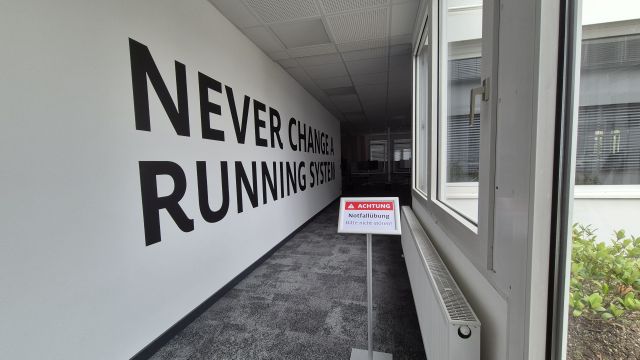
Federal Radiological Situation Centre
What are the tasks of the Radiological Situation Centre?
The Radiological Situation Centre becomes active when a radiological emergency occurs whose consequences could affect Germany. This includes, for example, accidents in German or foreign nuclear power plants or serious accidents during the transport of radioactive materials. The Radiological Situation Centre collects, evaluates and documents all available data on the event and prepares the so-called radiological situation overview. This situation overview describes the current radiological situation - including, for example, measured values and meteorological data - and forecasts further developments as far as possible.
The situation overview is transmitted by the Radiological Situation Centre to the Länder, other federal authorities, and the joint reporting and situation centre of the Federation and the Länder at the Federal Office of Civil Protection and Disaster Assistance; it serves as the basis for decisions on any necessary protective measures.
In addition, the Radiological Situation Centre also assumes coordination and reporting tasks. It is the contact for authorities at home and abroad, e.g. when it comes to coordinating measures for emergency protection.
Also involved in supporting the Radiological Situation Centre are the Federal Office for Radiation Protection (BfS), the Federal Office for the Safety of Nuclear Waste Management (BASE), and the Federal Office of Civil Protection and Disaster Assistance (BBK).
Where is the Radiological Situation Centre located?
The Radiological Situation Centre is not located in one place but is a spatially distributed network. The head office of the network is the Federal Ministry for the Environment. The participating institutions draw on their respective emergency response infrastructure in the event of an operation.
GRS provides its Emergency Centre in downtown Cologne for this purpose. The Emergency Centre has the appropriate technical and personnel infrastructure to evaluate information on the current plant status in the event of a severe accident, to prepare forecasts on the further course of the accident, and to communicate with all important players.
How does radiological emergency protection work in Germany?
If a radiological emergency occurs, measures of radiological emergency protection are initiated. The aim of all these actions is to protect man and the environment as far as possible from the dangers of ionising radiation. A distinction is made between plant-internal and plant-external emergency protection.
The operator of the nuclear power plant is responsible for emergency protection within the plant. This includes all measures within a nuclear installation that prevent the release of radioactive substances or keep it as low as possible. Off-site emergency protection consists of all measures to protect the population from the hazards of leaking radioactive substances. This also includes the activities of the Radiological Situation Centre.
On the one hand, this comprises disaster control measures. These are, for example, recommendations to shelter, the distribution or intake of iodine tablets, or the evacuation of affected areas. On the other hand, off-site emergency protection also includes medium- to long-term emergency management to reduce radiation-related risks. Concrete measures here can include recommendations to restrict the consumption of agricultural products contaminated with radioactive substances. Further information on this topic can be found under Basic knowledge of emergency response.